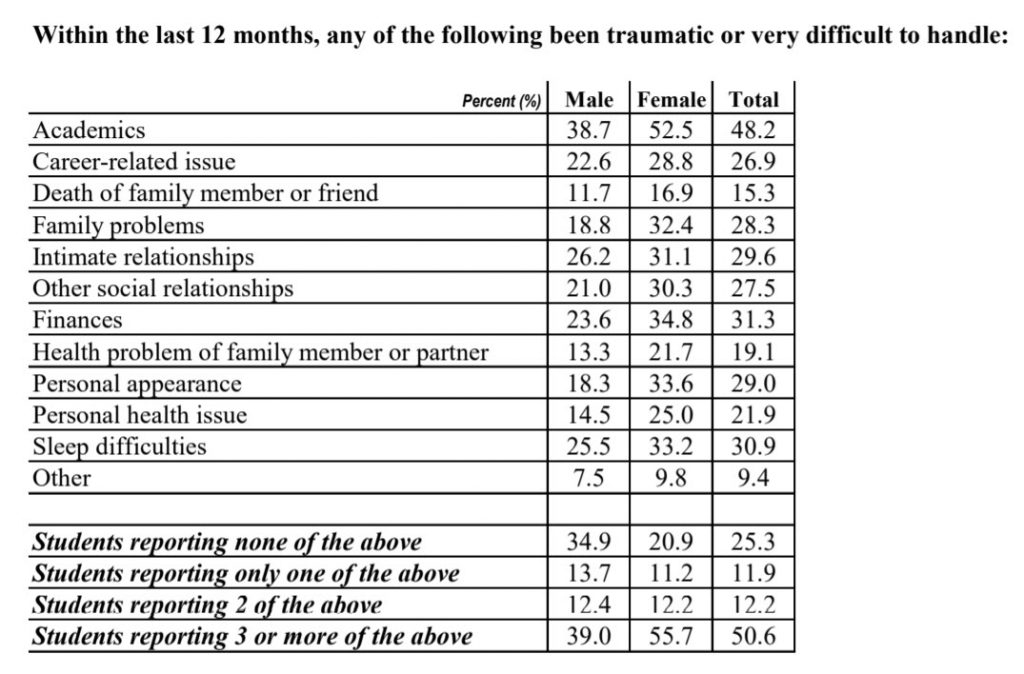By Doug Ward
The pandemic has taken a heavy mental and emotional toll on faculty members and graduate teaching assistants.
That has been clear in three lunch sessions at CTE over the past few weeks. We called the sessions non-workshops because the only agenda was to share, listen, and offer support. I offered some takeaways from the first session in March. In the most recent sessions, we heard many similar stories:
- Teaching has grown more complicated, the size of our classes has grown, and our workloads and job pressures have increased. Stress is constant. We are exhausted and burned out. “I feel hollow,” one participant said.
- Students need more than we can give. Many students are overwhelmed and not coming to class; they can’t even keep track of when work is due. They also aren’t willing to complete readings or put in minimal effort to succeed. All of that has drained the joy from teaching. “I have to psych myself up just to go to class some days,” one instructor said.
- We don’t feel respected, and we have never been rewarded for the vast amounts of intellectual and emotional work we have put in during the pandemic. Instead, the workload keeps increasing. “It feels like the message is: ‘We hear you. Now shut up,’ ” one participant said.
- We need time to heal but feel unable to ease up. Nearly all of those who attended the non-workshops were women, who often have additional pressures at home and feel that they will be judged harshly on campus if they try to scale back. “Society expects us to bounce right back, and we can’t,” one participant said.
Much has been written about the strain of the pandemic and its effect on faculty members and students. We can’t offer grand solutions to such a complex problem, which has systemic, cultural, psychological, and individual elements. We can offer support in small ways, though. So here is a motley collection of material intended to provide a modicum of inner healing. Some of these will require just a few minutes. Others will require a few hours. If none of them speak to you, that’s OK. Make sure to seek out the things that do brighten your soul, though.
An image (times 6)
I asked an artificial intelligence image generator called Catbird to create representations of serenity in everyday life. You will find three of those at the top of the page and three at the bottom. They won’t solve problems, but they do provide a momentary escape.
A song
“What’s Up,” by 4 Non Blondes. I recently rediscovered this early ’90s song, and its message seems more relevant than ever. It addresses the challenges of everyday life even as it provides a boost of inspiration. Even if you aren’t a fan of alt-rock, it’s worth a listen just to hear Linda Perry’s amazing voice.
A resource for KU employees
GuidanceResources. Jeff Stolz, director of employee mental health and well-being, passed along a free resource for KU employees. It is provided by the state Employee Assistance Program and can be accessed through the GuidanceResources site or mobile app. Employees can sign up for personal or family counseling, legal support, financial guidance, and work-life resources. The first time you log in, you will need to create an account and use the code SOKEAP.
A TED Talk
Compassion Fatigue: What is it and do you have it?, by Juliette Watt. Compassion fatigue, Watt says, is “the cost of caring for others, the cost of losing yourself in who you’re being for everyone else.”
A recent article
My Unexpected Cure for Burnout, by Catherine M. Roach. Chronicle of Higher Education (20 April 2023). Try giving away books and asking students to write notes in return.
A book
Unraveling Faculty Burnout: Pathways to Reckoning and Renewal, by Rebecca Pope-Ruark (Johns Hopkins University Press, 2022). Pope-Ruark’s book focuses on women in academia and draws on many interviews to provide insights into burnout. The electronic version is available through KU Libraries.
A quote
From Pope-Ruark’s book.
I learned to offer myself grace and self-compassion, but it took a while, just as it had taken a while for my burnout to reach the level of breakdown. Once I was able to shift my mind-set away from needing external validation to understanding myself and my authentic needs, I was able to understand Katie Linder when she said, “It’s important for me to have that openness to growth, asking, ‘What am I supposed to be learning through the situation?’ even if it’s really hard or it’s not ideal or even great.”
If you don’t feel like devoting time to a book right now, consider Pope-Ruark’s article Beating Pandemic Burnout in Inside Higher Ed (27 April 2020).
A final thought
Take care of yourself. And find serenity wherever you can.
Doug Ward is associate director of the Center for Teaching Excellence and an associate professor of journalism and mass communications.





Recent Comments